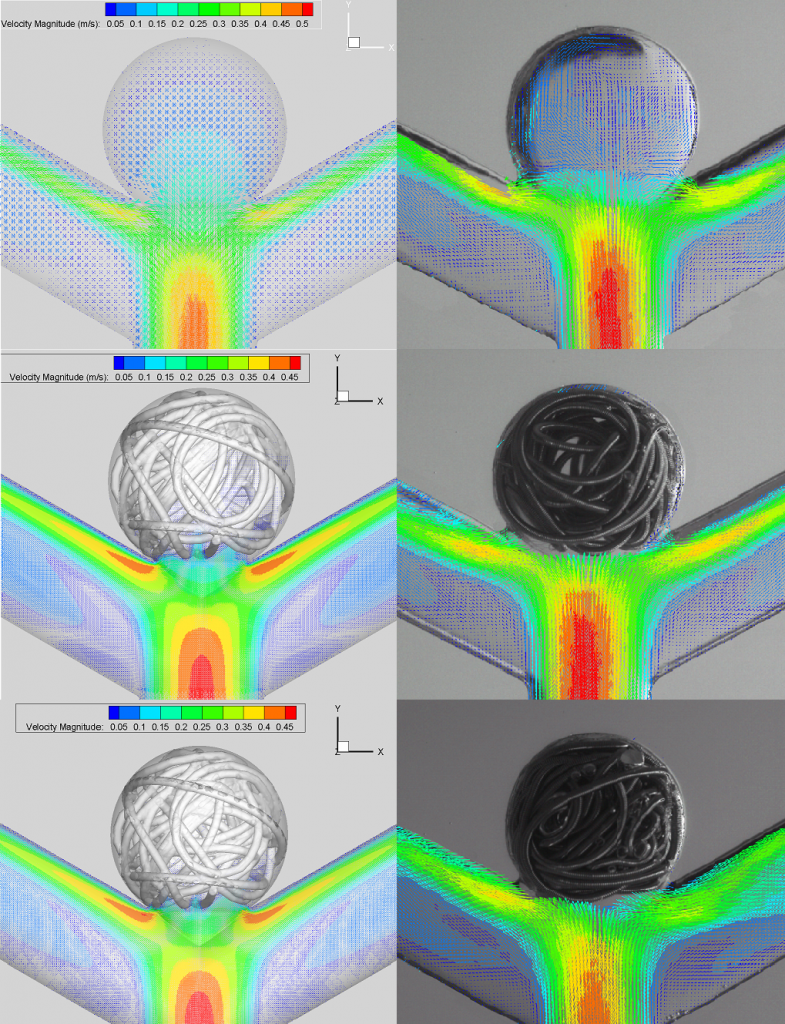Treatment with Endovascular Stents
Stent configurations in bifurcating aneurysms:
Using both PIV and computational fluid dynamics (CFD) we have quantified the performance of different stent configurations on aneurysmal fluid dynamics
 CFD simulations for two stent configurations CFD simulations for two stent configurations
 PIV velocity magnitude vectors for three stent configurationsTelescoping stents PIV velocity magnitude vectors for three stent configurationsTelescoping stents
A common treatment for wide-neck cerebral aneurysms is multiple stent-in-stent deployments that reduce stent porosity and enhance flow diversion. We have conducted in-vitro studies to quantify the changes in aneurysmal fluid dynamics using these techniques.
Stand-alone Stent treatment
In collaboration with the Center for Advanced Surgical and Interventional Technolgy at UCLA, we are investigating the fluid dynamic performance of a Hyper-Elastic Thin Film Nitinol (HE-TFN) covered stent for stand-alone stent treatment.
 Velocity magnitude vectors within a sidewall aneurysm treated with two different HE-TFN covered struts Velocity magnitude vectors within a sidewall aneurysm treated with two different HE-TFN covered struts
1] Rinkel, G., M. Djibuti, A. Algra, and J. V. Gijn. Prevalence and risk of rupture of intracranial aneurysms: a systematic review. Stroke 29:251–256, 1998.
[2] Schievink, W. Intracranial aneurysms. N. Engl. J. Med. 336:28–40, 1997.
[3] Babiker MH, Gonzalez LF, Albuquerque F, Collins D, Elvikis A, Frakes DH (2010) Quantitative effects of coil packing density on cerebral aneurysm fluid dynamics: An in vitro steady flow study. Ann Biomed Eng 38:2293–2301 |







